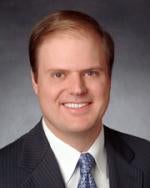In order to direct the ongoing reform of Chinese public hospitals, the Chinese central government recently issued the Guiding Opinions on Pilot Comprehensive Reform of Urban Public Hospitals, which highlight various strategies to replace the current profit-driven model, reduce patients’ medical expenditures, improve the current management system, establish appropriate remuneration mechanisms to motivate medical personnel, and optimise the distribution of medical resources.
Recently, the General Office of the State Council published the Guiding Opinions on Pilot Comprehensive Reform of Urban Public Hospitals, which took effect on 6 May 2015. The Guiding Opinions give directions for the ongoing reform of public hospitals, an effort that aims to replace the current profit-driven model, reduce patients’ medical expenditures, improve the current management system to achieve independent and effective management, establish appropriate remuneration mechanisms to motivate medical personnel, and optimise the distribution of medical resources to reduce the overwhelming demands on public hospitals.
The Guiding Opinions envisage that by 2017, modern hospital management systems will be preliminarily established, increases in patient expenditures will be controlled effectively, and patient satisfaction will be significantly enhanced. To achieve these goals, the Guiding Opinions address the following areas for improvement.
1. Management System Reform
The Guiding Opinions call for more effective independent operational management of public hospitals, and clarification of the government’s fundamental role as the sponsor and supervisor of such hospitals. For example, public hospitals are encouraged to have more autonomy in personnel appointment and operations management. Public hospitals’ evaluation systems should be oriented to public benefits, with a major focus on matters such as hospital clinical performance, cost control, operational efficiency, financial management and patient satisfaction. As hospitals seek to implement these improvements, they should adopt an integrated social supervision mechanism to strengthen public engagement and oversight (e.g., health care industry associations, specialised third-party organisations) by disclosing relevant information about their financial status, service quality and safety, prices and medical expenditures.
2. Revenue Source Reform
Public hospital revenue is derived from three main sources: government financial subsidies, medical service fees and income from drug mark-ups. The Guiding Opinions call for change in all three areas. First, the common practise of increasing income by prescribing more medicine must be abolished. The Guiding Opinions also require that drug mark-ups be removed from the reimbursement mechanism of public hospitals. The consequential reduction in income could be offset by adjusting prices for medical services, increasing government investment and lowering operation costs. The prices of drugs and medical disposables should be lowered by implementing centralised purchasing, and efforts should be made to ensure a proper pricing mechanism for medical services. While the government needs to provide financial subsidies to support public hospitals in equipment procurement, scientific research and education, the determination of the amount of financial subsidies will be subject to performance reviews.
3. Implementation of a Reasonable Performance Assessment System for Medical Personnel
According to the Guiding Opinions, public hospitals should adopt a reasonable performance assessment system to motivate medical personnel to achieve higher efficiency and better service quality. In addition, the Guiding Opinions stipulate that remuneration of medical personnel should not take into account the revenue enhancement techniques that the Guiding Opinions want to eliminate, such as increased prescription of medicines or medical products.
4. Implementation of a Multi-Tier Treatment System
Over the years, public hospitals have been overwhelmed with demand because patients often choose larger public hospitals over local, community-level medical institutions, even for minor health problems. The Guiding Opinions emphasise the necessity of building a multi-tier treatment system with appropriate referral mechanisms to optimise the distribution of medical resources among different tiers of medical institutions. Community-level medical institutions should provide basic medical services to patients, and higher-tier hospitals should give priority to those patients referred by community-level medical institutions. By the end of 2015, outpatients referred by lower-tier medical institutions should increase to at least 20 per cent of all public hospital outpatients. Meanwhile, the amount of outpatient services in tertiary-level hospitals should be reduced. Medical insurance policies also should be adjusted to support the establishment of a multi-tier treatment system.
5. Other Measures
According to the Guiding Opinions, medical insurance should play a larger role in reducing public medical costs. The Guiding Opinions also encourage private companies, charity organisations, foundations and commercial insurance institutions to invest in the establishment of new medical institutions or the reform of public hospitals. The Guiding Opinions set out an aggressive agenda for establishing regional medical and health care information platforms and constructing information systems within medical institutions.
Conclusions
Among the public hospital reform goals that the Guiding Opinions proposed, two have caught the most public attention. One is the elimination of drug mark-ups to avoid over-prescription of medicines and inappropriate revenue generation for public hospitals. Because such practice is fundamental to the current financial model of public hospitals, this change will require the overhaul of public hospitals’ management and operation systems. The second area of special interest is the goal for out-of-pocket medical costs borne by each patient to be reduced to less than 30 per cent of overall medical expenditures by the end of 2017. This aggressive goal further demonstrates the Chinese government’s relentless effort to bring drug prices under control, notwithstanding its recent removal of the price ceiling for most drugs in China.
Mandy Yang and Samuel Chen are co-authors of this article.





 />i
/>i
